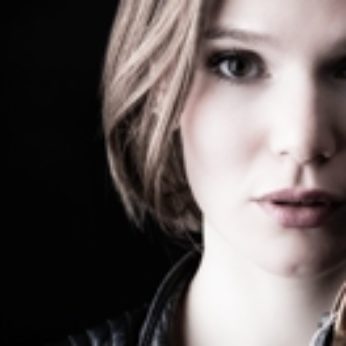Composer: Béla Bartók (b. 1881 - d. 1945)
Performance date: 03/07/2016
Venue: Bantry Library
Composition Year: 1938
Duration: 00:17:18
Recording Engineer: Richard McCullough, RTÉ lyric fm
Instrumentation: vn, va, vc, pf
Instrumentation Category:Trio
Instrumentation Other: cl, vn, pf
Artists:
Tamsin Waley-Cohen -
[violin]
Cédric Tiberghien -
[piano]
Annelien Van Wauwe -
[clarinet]

Contrasts was commissioned by the American jazz clarinettist Benny Goodman, at
the suggestion of Bartók’s friend the violinist, Joseph Szigeti. It was written
in 1938, shortly before Bartók emigrated to the States to escape Nazi
persecution. In fact already in 1938, Bartók was sending his manuscript scores
to
for safe-keeping. The annexation of
to change his publisher as the Vienna-based Universal Edition was taken over by
the Nazis. He was also obliged to move from the Austrian performing rights
society, which handled his copyright payments, to its British equivalent.
Bartók had nothing but scorn for the Nazis and refused to allow his work to be
performed in
But it was only when his mother died at the end of 1939 that he felt able
actively to plan his escape.
Contrasts is unique in Bartók’s oeuvre as the only one of his
chamber works to include a wind instrument, just as the violin was the only
other solo instrument that he wrote for apart from his own instrument. All
three movements explicitly reflect his obsession with Hungarian folk music that
he spent most his life collecting and researching. Each movement takes on the
varied and exciting rhythms of Hungarian dances, which combine to make this
such an exciting and entertaining work.
The so-called verbunkos tradition originated with
gypsy-performed popular dances used to attract village audiences from whom
soldiers could be recruited for the Imperial army. Despite the music being
drawn from diverse ethnic sources and being used for overt imperial political
purposes, the verbunkos became over
time a symbol of the Hungarian nation. It also became established in the
classical tradition through a series of musical clichés, such that after his
early flirtation with overt Hungarian nationalism, Bartók ignored the verbunkos style as too populist and
Hungarian audiences avoided his music for not pandering to populist
nationalism.
Contrasts was commissioned as a work that would fit on two sides
of a 78rpm record for the American jazz audience that were followers of Benny
Goodman, the virtuoso jazz clarinettist. In the late thirties he became the
most famous jazz musician to achieve fame as a classical concert artist, for
instance recording the Mozart Quintet with the Budapest Quartet. In this
American context the verbunkos style
takes on a different image as does the extravagant first movement cadenza for
the clarinet. Incidentally Bartók never kept to the time limits and when he
added the slow movement the recording had to move to two records.
The outrageous
finale requires the violinist to bring two violins on stage as the movement
opens with her playing a mistuned instrument, reminiscent of some village
fiddler. The clarinettist also requires two instruments for this virtuoso and
viscerally exciting movement.
Copyright © 2024 West Cork Music. All rights reserved.
Designed and developed by Matrix Internet